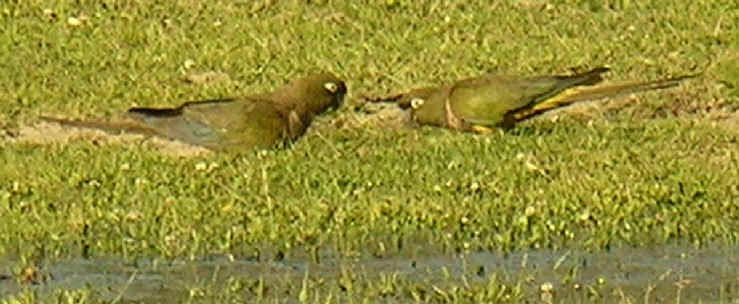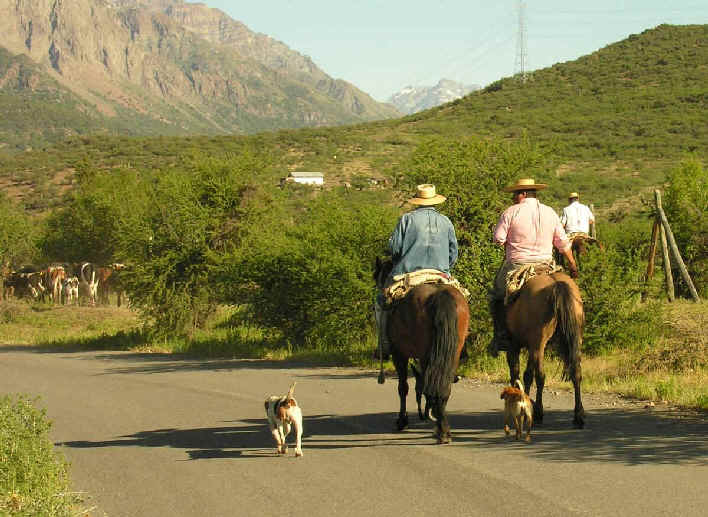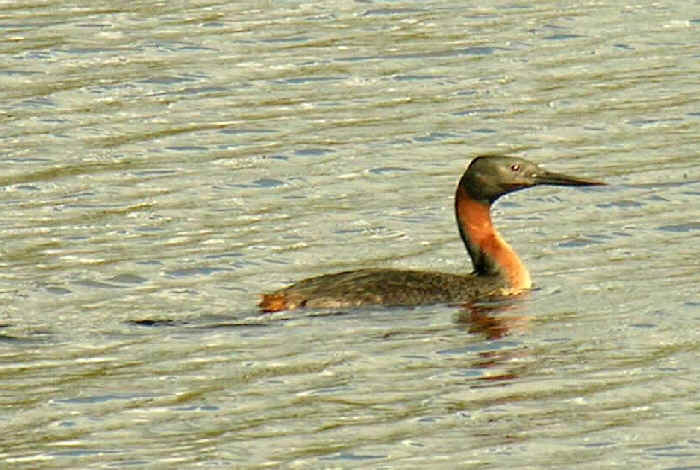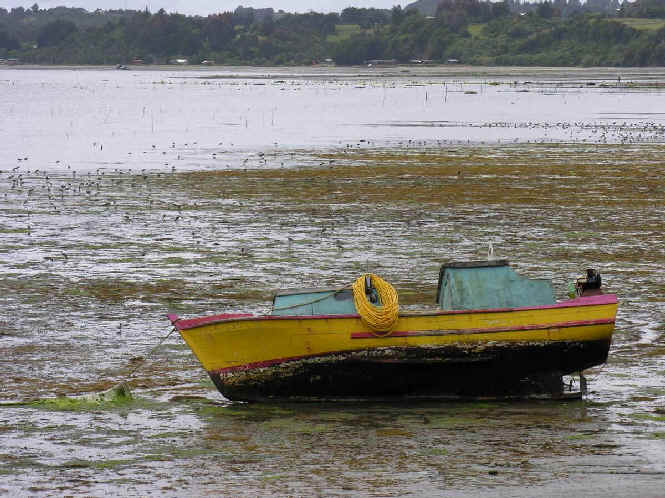 PO
Box 9021, Wilmington, DE 19809, USA
PO
Box 9021, Wilmington, DE 19809, USAE-mail: font@focusonnature.com
Phone: Toll-free in USA 1-888-721-3555
or 302/529-1876
Website: www.focusonnature.com
 PO
Box 9021, Wilmington, DE 19809, USA
PO
Box 9021, Wilmington, DE 19809, USA
E-mail: font@focusonnature.com
Phone: Toll-free in USA 1-888-721-3555
or 302/529-1876
Website: www.focusonnature.com
PHOTOS
OF
SIGHTS
and
SCENEs
in
Chile
photographs
during the
Focus On Nature Tour
in Chile in November 2011,
in the central & southern parts
of the country.
All of the photographs that follow were taken during that tour
by tour participant, Frank Stermitz of Colorado, USA - ©
- all rights
reserved.

This adult Black-chested
Buzzard-Eagle
was looking down on us
from a mountainside in the Andes.
Links:
Birds
& Other Wildlife during our November 2011 Chile Tour
A Narrative relating to our November
2011 Tour in Chile
Some
of the Accommodations during our Nov 2011 Chile Tour
A Feature with Some Poems about Birds by Pablo Neruda (with photos)
A
Complete List of Chile Birds & a Photo Gallery, in 2 parts:
Part
1: Tinamous to Coots
Part 2: Thick-knee to Saltator
Some Butterflies and Moths of Chile
Amphibians & Reptiles of Chile
The Diverse Plant-life of Chile
Upcoming FONT Birding & Nature Tours in Chile
Directory of Photos in this Website

Where the Black-chested
Buzzard-Eagle
was on the mountainside above us,
we were in the Andean habitat
of the Gray-breasted Seedsnipe,
sierra-finches and ground-tyrants
and other birds of the mountains.

When we were there, it snowed for just a bit,
and the seedsnipe blended in.

Another scene, that same afternoon,
after the sun came out,
on the snow higher up
on the mountains in the Andes of central Chile.

During another afternoon, in southern Chile,
one of the volcanoes in that area,
Volcan Lanin

One of the most famous of the volcanoes in Chile's "Lake District"
is Volcan Osorno.
Here, there is not the clarity of a Chilean post card,
as the sky was somewhat laden with ash
from an ongoing eruption of a nearby volcano in Argentina
in the Puyehue-Cordon mountain chain.
That ongoing eruption actually began back in June.
We were in the area in November.

Also in
southern Chile,
Araucaria
Trees
with another volcano in the background.
The Araucaria is the national tree of Chile.
Araucaria araucana lives over 1,500 years,
and the species goes back to the Jurassic Period.

An young
Araucaria with hopefully a long life ahead for it,
maybe more than fifteen hundred years.

A Nalca, or Pangue,
a plant of the Magellanic Forest in southern Chile.
This one photographed on Chiloe Island.

In central
Chile, a flower of the cactus called the Quisco,
Echinopsis chilensis.

Above & Below: a lizard endemic to Chile,
the colorful Thin Tree Lizard,
Liolaemus tenuis


At about our southernmost point
during the tour,
on the island of Chiloe,
we saw this butterfly,
the Four-eyed Lady,
Vanessa carye,
a close South American relative
of the Painted Lady.

The rare Marine Otter, along the seacoast of Chile,
is a close relative of the larger Sea Otter
of the Northern Hemisphere.

Magellanic Penguins
at one of their nesting sites
along the seacoast of Chile.

Inland, in the Andean foothills, a scene in the Chilean countryside,
with some rare Burrowing Parakeets perched in treetops.
Very localized in the country, the Burrowing Parakeet in Chile
is an endangered subspecies.

At a distance, in a field, two Burrowing Parakeets.

Along the road where we saw the
Burrowing Parakeets,
there may have been, when we were there,
only one vehicle, a pick-up truck.
But there were dogs, cows, and cowboys on horses.
Just 3 of the dozen or so cowboys that we saw are in the photo.
Every one of the cowboys that we saw wore the appropriate hats.

The
Black-faced Ibis is one of the characteristic birds
of southern Chile,
often seen and heard.

The Ringed Kingfisher is southern Chile
is an isolated subspecies,
Megaceryle torquata stellata.

Proclaiming its territory on Chiloe Island,
the bird known in South America as the Grass Wren,
here the southernmost subspecies, Cistothorus platensis hornensus
(as in Cape Horn).
Called the Sedge Wren in North America,
it has various subspecies, ranging north into Canada.

Two Steamer-Ducks, both preening.
At left, a male; at right, a female.
Don't wait for them to fly. They won't.
They're among the flightless birds of southern South America.
Others are penguins and rheas.

A Great Grebe,
indeed a great bird,
to see and photograph.

A pair of Black-necked Swans
with a sleeping cygnet hitching a ride.

A large flock of Black-necked Swans
along the coast of Chiloe Island.

Along that coast of Chiloe,
the difference in the tides is pronounced.

At low tide, on the flats,
shorebirds feed,
with flocks on Chiloe Island during the Austral Summer
of hundreds, even thousands,
of Hudsonian Godwits.
That species, which nests in a restricted range in northern North America,
spends its non-breeding seasons in southern South America,
in large homogeneous flocks on mudflats at two places:
Tierra del Fuego and Chiloe Island.

There are houses on stilts along that coast where the tides are pronounced,
on Chiloe Island.

Also an architectural feature of
Chiloe Island
are the churches.
Pictured here, as we conclude this album of Chile photos,
are a few of the 150 of them that still stand.

The churches on Chiloe exemplify
the island's history,
and today are an attractive aspect of the scenic beauty of the place.
According to the UNESCO World Heritage program,
"the churches of Chiloe represent a unique example in Latin America
of an outstanding form of ecclesiastical wooden architecture.
They represent a tradition initiated by the Jesuit Missions
in the 17th and 18th centuries, and continued
and enriched by the Franciscans during the 19th Century."

![]()
Some
Accommodations during the FONT November 2011 Chile Tour

At this
almost-new hostel where we stayed in the Los Rios Region,
we enjoyed a wonderful German dinner.

Inside the
hotel where we stayed in Ancud, on Chiloe Island,
there was some character with local art and trinkets.
It was in this hotel that a grouping of local wooden guitars
was on the wall, and in which, one evening,
such a guitar was being played as people sang.

In this
hotel, on Chiloe Island, we had a fine brunch.
It started out as "a coffee", but became a brunch.

Our last
night in Chile was not in the big city of Santiago,
but in a much smaller place, described in even a new guidebook,
as an "easy-going small town, pleasant enough".
It was, for us, very pleasant as our wonderful accommodation,
was a Four Points Sheraton Hotel,
with a casino, that we did not visit,
and an excellent restaurant that we did.
The easy-going, small town is Los Angeles,
"the other Los Angeles" we called it.
Web page by Rise Hill